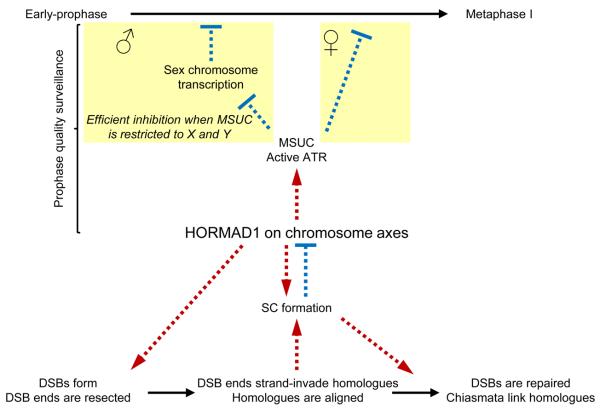Figure 8. Model for meiotic progression: negative feedback-loop of HORMAD1 and SC coordinates homology search and meiotic progression.
Processes, activation-promotion and inhibition are marked by continuous black arrows, red dashed arrows and blue flat-ended dashed arrows, respectively. HORMAD1 associates with forming chromosome axes at the beginning of meiosis where it promotes DSB formation and/or processing of DSBs. It thereby ensures that adequate numbers of single-stranded DSBs are available for homology search. As part of the homology search process DSB ends strand-invade into homologues. Multiple strand invasion events along the length of chromosomes lead to full alignment of pairs of homologues, which is a prerequisite for the completion of SC formation. HORMAD1 also promotes SC formation through a mechanism that is independent of homology search. SC formation leads to depletion of HORMAD1 from axes and down-regulation of HORMAD1 function40. Hence, in spermatocytes, full autosomal SC formation leads to a restriction of HORMAD1 and ATR activity to sex chromosomes, thereby promoting efficient silencing of sex chromosomes, which is a prerequisite for progression beyond mid-pachytene13, 60, 61. In oocytes, completion of SC formation on all chromosomes leads to complete inactivation of HORMAD1, which in turn leads to down-regulation of ATR and MSUC. Since sustained ATR activity and/or sustained MSUC is believed to block progression beyond meiotic prophase13, full SC formation and HORMAD1 inactivation link successful homologue alignment with progression beyond meiotic prophase. Note that successful DSB repair is probably also required for full down-regulation of ATR activity and for meiotic progression in oocytes (for the sake of simplicity, this branch of the prophase checkpoint is not displayed in the model).

